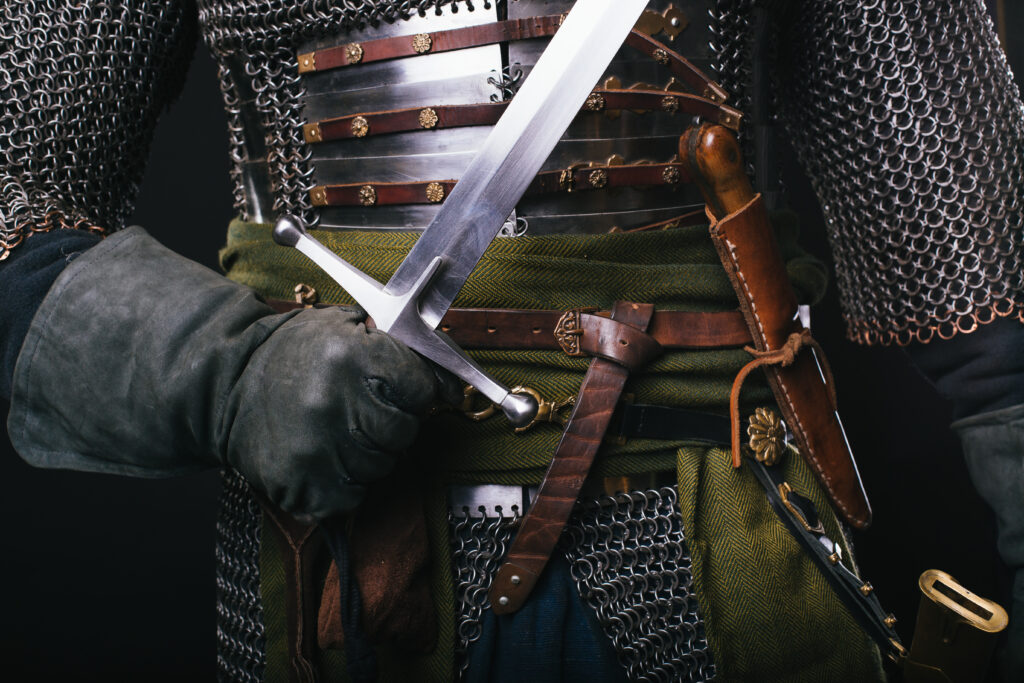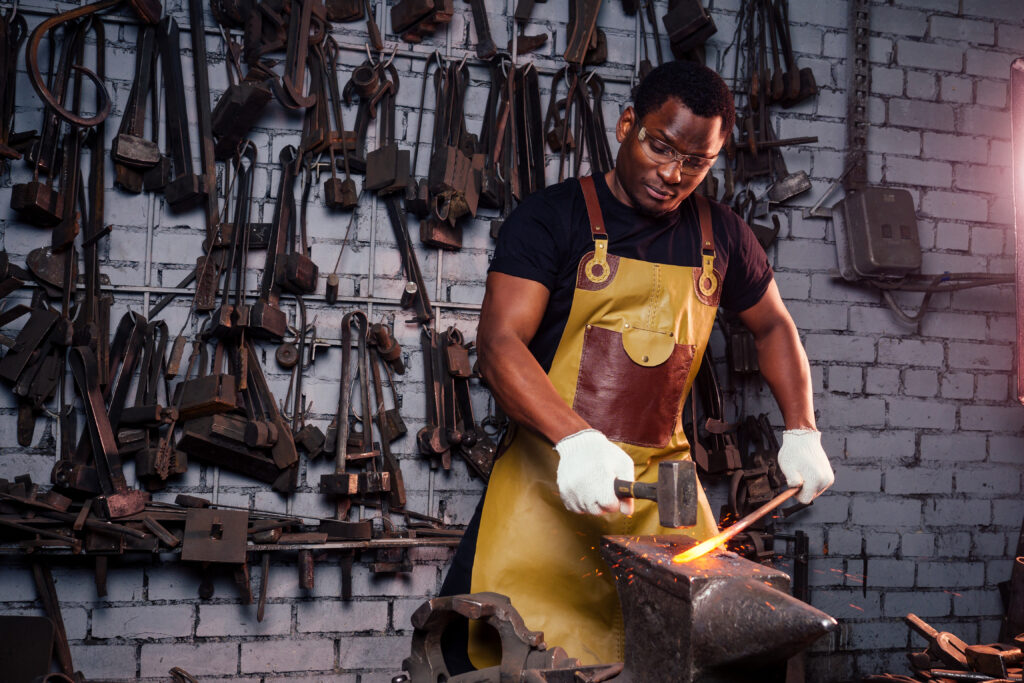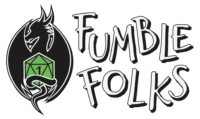The Do’s and Don’ts of basic imaginary fighting!
In this post, we will be talking about one of the pillars of TTRPGs: Combat. For this, as usual, we will be using D&D 5e as our example system, but most of the tips here will be relevant to your preferred system.
To do this, we will break this topic down in to the following sections:
- The Basics
- The Nuts and Bolts
- The Flair
By doing this, we can begin to learn what we need to do, with section 1 allowing you to run a basic encounter, section 2 developing your skills and section 3 allowing you to really flex those creative muscles!

The Basics
So, you’ve decided you want to DM and now you need to figure out how to run a fair fight. Thankfully, there are tools already built into most systems to help you balance a fight so you don’t devastate your friends in 20 seconds.
In D&D 5e, this balancing mechanic is called Combat Rating, or CR for short. Every monster, big and small, has a CR assigned to them. The higher the CR, the more dangerous they are. These CRs lead to knowing how difficult a fight is compared to the level of your players.
I know that might sound complicated, but I promise it’s much simpler when written out as follows:
Your party consists of 4 people, all at level 1. They are met by 4 bandits who have a CR of ⅛.
If we add the CR together, that’s ⅛ x 4 = ½ . This would be a medium-difficulty fight for some new adventurers, and thus would be a good introduction to combat.
If you are still unsure after this explanation, you can use the following tool by Kastark, a free website dedicated to making DM’s lives easier: Karstark’s Encounter Calculator
You can also find all monsters in the original source books, but in case you need them in a hurry, the most common monsters are found here.

The Nuts and Bolts
So, we have a combat encounter: 4 Players vs 4 Bandits. How do we actually get to the hitting part? Well, there are a few things that we need to roll first.
The first thing to roll in every combat encounter is called Initiative, and it determines who acts first. To do this, your players roll a d20 die then add their Initiative modifier, found on the top of their character sheet. You, the DM, will do similarly but for each of your bandits; in this case we will roll 4 times, with the number we roll being their turn order. More difficult monsters can have modifiers, but our bandits aren’t that good. Next, we take everyone’s total, and put them in a list from highest number to lowest, like so:
Cleric – 18
Bandit – 16
Fighter – 15
Bandit – 12
Wizard – 10
Bandit – 9
Bandit – 9
Barbarian – 4
There are tools online that can help you to do this, with many built in to any Virtual Tabletop (VTT) that you might use. Using the example above,the Cleric will take their move first, then your first bandit, and so on until either your bandits or the players are incapacitated (hopefully your party should have no problem with this combat, unless they are REALLY unlucky).
Each round of combat lasts six seconds and each character in the initiative has a set of things they can do in each round. These are:
- Movement
- Action
- Bonus Action
- Reaction
Movement
Each character or monster has a movement speed which can be found on their character sheets. This is usually around 30ft or 6 squares on a battle map (We will link here when it is penned). Movement can be split; for example, your bandit could move 10ft, take the attack action against someone and then move a further 20ft.
Movement can also be affected by different factors, which break down as follows:
Move – Cost: 5ft per 5ft
Climb – Cost: 10ft per 5ft
Swim – Cost: 10ft per 5ft
Drop prone – Cost: 0ft
Crawl – Cost: 10ft per 5ft
Stand up – Cost: half movement speed
High jump – Cost: 5ft per 5ft
Long jump – Cost: 5ft per 5ft
Improvise – Any stunt not on this list
Difficult terrain (slippery hills/Ice) – Cost modifier: +5ft per 5ft
Grapple move (when carrying someone) – Modifier: half movement speed
Action
This is where you would do the stabby, the smashy or the flashy (I mean spells… I just wanted to make it rhyme).
Characters and monsters usually have one action per turn, unless stated otherwise on their character sheets. Our bandits can only take one action per turn, which is the same for the player characters until they reach a higher level.
What each creature or monster can do is determined by the ‘ACTIONS’ section on their sheets/stat block.
For our bandits, we have the option to slash with a sword, or shoot with a crossbow. Crossbows are good from a distance, but not so good up close, so switching between weapons will be required.
To check if our baddy bandits hit our players, we are going to roll a d20. This is the standard die in 5e, and used for most rolls. In this case, we rolled a 13, which is pretty ok; next we add any modifiers, this is listed next to the action ‘longsword’ as +3 resulting in a 16 to hit.
All attacks in 5e are d20 + modifiers vs the targets Armour Class (AC for short). If our 16 beats their Armour class (listed on their character sheet), then we get to do some damage (listed next to the action weapon), if not, we miss and move on to the next character.
In the Action phase, we can do any 1 of the following:
Attack – Melee or ranged attack
Grapple – Special melee attack
Shove – Special melee attack
Cast a spell – Cast time of 1 action
Dash – Move up to your Speed’s distance
Disengage – Prevents opportunity attacks
Dodge – Increase defenses
Escape – Escape a grapple
Help – Grant an ally advantage
Use Object – Interact, use special abilities
Use shield – Equip or unequip a shield
Hide – Sometimes direct fighting isn’t the best option
Search – You can’t fight if you don’t know where they are (Or look for a object/switch)
Ready – Choose an action and state what will trigger it (Attack when bandit comes into melee range)
Use class feature – Some features use actions
Improvise – Any action not on this list (Down to your discretion)
Taking the above choices into account, most often we will be either Attacking, Dashing or Casting a spell. These are the bread and butter of combat in 5e.
Bonus Action
These are rarer for monsters, though some have the chance to take them. These are usually things like healing, changing shape etc. and will be explicitly stated on their stat blocks. Player Characters will have far more options for bonus actions, including spells and class or racial abilities, and the option to attack with a second weapon in their off-hand.
We have more limited options for what we can do in our bonus action:
Offhand Attack – Use with the Attack action
Cast a spell – Cast time of 1 bonus action
Use class feature – Some features use bonus actions
Reactions
A reaction is something that happens outside of a character or creature’s turn, and happens as a direct result of another action being taken against them. As an example, moving out of melee range with an enemy will provoke an Attack of Opportunity (this includes our characters and our bandits). You only get one per turn, though, so if you’re in range of multiple opponents choose the reaction wisely.
We can react in one of the following ways:
Opportunity Attack – Use with the Attack action
Cast a spell – Cast time of 1 bonus action
Use class feature – Some features use bonus actions
The Flair
With the basics of a combat instance covered above, now is the time to add the flash and panache to our combat. The easiest and most common way to do this is by describing the actions taken by your bandits and the players.
For example, instead of saying:
‘The bandit hits you for 6 slashing damage, next person.’
Try something like:
‘With a fearsome snarl, the bandit lunges at you (Player Character), eyes wild, trying to score a quick victory. The sword makes contact with your shoulder, leaving a deep wound. You take 6 points of slashing damage.’
Adding this level of narrative makes the combat more exciting for everyone, sets the scene, and keeps those not currently taking actions involved and engaged in the game. Your players will be influenced by this, and in time offer narrative suggestions of their own, and can give the players immense satisfaction when they strike down an opponent by asking them to describe how they deal the fatal blow!
By going through these steps, building your skills and confidence over time and trying to engage your players in the storytelling, you create a more enjoyable experience, and – at the end of the day – that’s why we are all here right?
How to Support Fumble Folks
Hi and thank you for reading 15+ Great Gift Ideas for Geeks and Nerds! If you like what we do and wish to support Fumble Folks, here are a few ways you can do that:
- Follow us on our social media platforms. Find the links here: linktr.ee/fumblefolks
- Join our Discord Server and help our community grow!
- Join our Patreon and pledge the low price of a coffee every month. This will enable us to grow and do bigger and better things with Fumble Folks. Check out the Tiers we offer on Patreon or check out our other blog post here (coming soon).
- Listen to the Rapid Riders on Spotify or come and watch us live and give us that all-important Subscription on Twitch. Amazon Prime users get 1 free Prime Sub a month to use on your favourite Twitch creator, so use it wisely!
- Click on our Affiliate Links! We have been very lucky to be affiliate with a few companies including EMP, Hero Forge, iwantoneofthose.com among others. Clicking these links helps us as we get a small commission if you purchase anything, but won’t change anything for you. Win/win!
Above all, thank you for reading and stopping by! Any support is so much appreciated. Here’s to the future of Fumble Folks!
Recent Posts
- Denizens and Oddities Kickstarter Live
- Denizens, Oddities, and an overdue update!
- 2024 CRIT Award Winners!
- We are at Dragonmeet 2023: what you need to know!
- Mastering D&D 5e Character Creation: The Ultimate Guide to Crafting a Perfectly Balanced Character for Total Success
Archive
- November 2024
- October 2024
- November 2023
- October 2023
- July 2023
- May 2023
- January 2023
- December 2022
- October 2022
- August 2022
- June 2022
- April 2022
- January 2022
- December 2021
- November 2021
- October 2021
| M | T | W | T | F | S | S |
|---|---|---|---|---|---|---|
| 1 | 2 | 3 | 4 | 5 | 6 | |
| 7 | 8 | 9 | 10 | 11 | 12 | 13 |
| 14 | 15 | 16 | 17 | 18 | 19 | 20 |
| 21 | 22 | 23 | 24 | 25 | 26 | 27 |
| 28 | 29 | 30 | ||||
